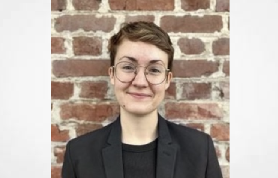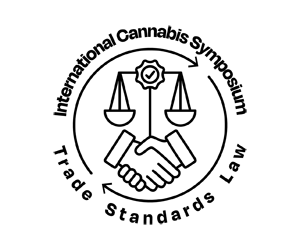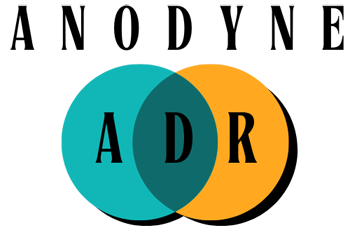Here’s the paper details info, abstract & introduction
The author Ashley Bradford also wrote an article for the Conversation on the study
Ashley C. Bradford is an applied policy researcher who studies the economics of risky behaviors and substance use, with an emphasis on how public policies shape health outcomes within the United States. Her recent work investigates the effects of recent drug policy innovations as well as the intersection between housing policy and risky behaviors.
Her work has been published in journals such as: The Journal of Law and Economics, The Journal of Policy Analysis and Management, JAMA Internal Medicine, Health Economics, Health Services Research, and Health Affairs. It has also been featured in media outlets such as: The New York Times, The Washington Post, The Hill, The Guardian, BBC Radio, CNN, and Forbes.
Findings This cross-sectional study of 9 438 716 commercially insured patients found statistically significant reductions in benzodiazepine dispensing after increases in both medical and recreational cannabis access. However, evidence suggests increases in other types of psychotropic dispensing.
Meaning This study suggests that cannabis laws may be significantly associated with the population-level use of prescription drugs to treat mental health disorders, although the associations vary by drug class and state.
Importance Mental health disorders are prevalent yet undertreated health conditions in the US. Given perceptions about the potential effect of cannabis on individuals with mental health disorders, there is a need to understand the association of cannabis laws with psychotropic use.
Objective To investigate the association of medical and recreational cannabis laws and dispensary openings with the dispensing of psychotropic medications used to treat mental health disorders in the US.
Design, Setting, and Participants This cross-sectional study of 10 013 948 commercially insured patients used a synthetic control method to examine the association of cannabis policies with prescribing. Data on all patients dispensed prescriptions for each of the 5 classes of psychotropic medications from January 1, 2007, to December 31, 2020, were extracted from Optum’s deidentified Clinformatics Data Mart Database. Statistical analysis was performed from September 2022 to November 2023.
Exposures The 4 exposure variables measured were whether medical or recreational cannabis laws were in effect and whether medical or recreational cannabis dispensaries were open in each state and calendar quarter.
Main Outcome and Measures One measure of the extensive margins of dispensing and 2 measures of the intensive margins of dispensing were constructed for 5 medication classes (benzodiazepines, antidepressants, antipsychotics, barbiturates, and sleep medications).
Results The primary sample (the benzodiazepine sample) included 3 848 721 patients (mean [SD] age, 46.1 [11.4] years; 65.4% women; 53.7% aged 35-54 years). Medical cannabis laws were associated with a 12.4% reduction in the benzodiazepine fill rate (average treatment effect on the treated [ATT], –27.4; 95% CI, –14.7 to 12.0; P = .001), recreational cannabis laws were associated with a 15.2% reduction in the fill rate (ATT, −32.5; 95% CI, −24.4 to 20.1; P = .02), and medical cannabis laws were associated with a 1.3% reduction in the mean number of benzodiazepine fills per patient (ATT, –0.02; 95% CI, −0.02 to 0.02; P = .04). Medical dispensaries were associated with a 3.9% reduction in mean days’ supply per benzodiazepine fill (ATT, −1.7; 95% CI, −0.8 to 0.6; P = .001), while recreational dispensaries were associated with a 6.2% reduction (ATT, −2.4; 95% CI, −1.0 to 0.9; P < .001). Medical cannabis laws were associated with a 3.8% increase in antidepressant fills (ATT, 27.2; 95% CI, −33.5 to 26.9; P = .048), and medical dispensaries were associated with an 8.8% increase (ATT, 50.7; 95% CI, −32.3 to 28.4; P = .004). The mean number of antipsychotic medication fills per patient increased by 2.5% (ATT, 0.06; 95% CI, −0.04 to 0.05; P = .02) after medical cannabis laws and by 2.5% (ATT, 0.06; 95% CI, −0.04 to 0.04; P = .02) after medical dispensary openings. Findings for the other drug classes showed substantial heterogeneity by state and direction of association.
Conclusions and Relevance This cross-sectional study of commercially insured patients suggests that there may have been meaningful heterogeneous associations between cannabis policy and state and between cannabis policy and drug class (eg, decreases in dispensing of benzodiazepines but increases in dispensing of antidepressants and antipsychotics). This finding suggests additional clinical research is needed to understand the association between cannabis use and mental health. The results have implications for patient substance use and mental health–related outcomes.
Mental health disorders (MHDs) are both common and costly health conditions in the US. In 2021, 22.8% of adults (57.8 million) reported having at least 1 MHD.1 Overall, 47.4% of individuals in the US reported receiving a diagnosis for an MHD at some point in their lives.2 Mental health disorders are costly for society, amounting to approximately $201 billion in 2013 alone.3 Despite this, among individuals reporting at least 1 MHD, only 65.4% received any treatment within the past year.1
Available treatment options for MHDs continuously evolve, and 1 recent change is the emergence of cannabis as a potential treatment for some MHDs. As of June 2024, 24 states and the District of Columbia have recreational cannabis laws (RCLs) fully legalizing cannabis use for adults older than 21 years of age, and 30 states and the District of Columbia have medical cannabis laws (MCLs) allowing patients who received a diagnosis of a qualifying condition, including some MHDs, to access a medical cannabis card.4
Medical cannabis laws vary in the qualifying conditions that a patient must present with to gain access to a medical cannabis dispensary (the mechanism for access). It is not uncommon for states to include MHDs (eg, posttraumatic stress disorder and anxiety) in their list of qualifying conditions. However, the most common qualifying condition reported by medical card holders is chronic pain,5 the condition with the strongest evidence for cannabis treatment,6 and one often comorbid with MHDs.7–12 For individuals with such comorbid conditions, the therapeutic benefits associated with medical cannabis treatment may be much broader than just the treatment of pain, with the potential for unintended mental health benefits. This could lead to reductions in MHD-related drug dispensing, even without a medical cannabis card intended to treat MHDs.
In contrast to MCLs, RCLs cover the entire adult population, not just those with qualifying conditions. Thus, the numbers of potential users and medical conditions for which users could potentially benefit are much greater. Even if cannabis users are not intentionally consuming cannabis for medical purposes, the use itself may still affect mental health symptoms and subsequent psychotropic prescribing.
There is a sizable body of literature documenting the association between cannabis laws and prescribing of opioids.13–19 However, it is likely that these laws are also associated with psychotropic prescribing. Two prior studies16,17 found that MCLs were associated with reduced dispensing of drugs used to treat anxiety, depression, and sleep disorders among patients with Medicare and Medicaid. One study17 found that MCLs were associated with reductions in prescriptions for depression, anxiety, and sleep medications filled by Medicare enrollees, while the other study16 found no significant results for anxiety or sleep medications among Medicaid enrollees but did find reductions in dispensing of medications for depression. A more recent study20 found similar reductions for medications for anxiety, depression, and sleep among patients with Medicaid after the passage of RCLs. In addition, prior research indicates that the association between cannabis use and mental health symptoms is unclear, with some studies finding that cannabis use was positively associated with symptoms of anxiety, depression, and psychosis.21–24
We are unaware of studies investigating the association of MCLs or RCLs with psychotropic medication dispensing in the commercially insured population. We fill this gap by examining the associations of MCLs, RCLs, and cannabis dispensaries with dispensing for benzodiazepines (our primary outcome), as well as antidepressants, antipsychotics, barbiturates, and sleep medications in a large national claims database capturing data on privately insured populations.
Full paper at
https://jamanetwork.com/journals/jamanetworkopen/fullarticle/2823248




















